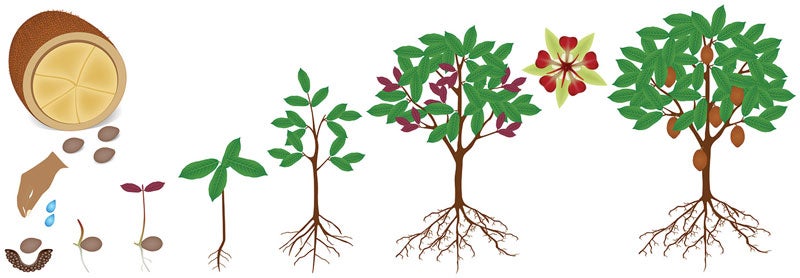Four environmental factors affect seed germination
Published 6:25 pm Thursday, May 7, 2020

- Courtesy Shutterstock
|
Getting your Trinity Audio player ready...
|
By Mark C. Carroll
I hope you are like me and you have taken advantage of some of the social distancing time to plant some seeds. In fact, spring has been mostly warm and somewhat wet, which are perfect conditions for getting a head start on your garden. Whether flowers or food, we should all be busy planting something. I pushed my luck and planted some okra seeds about a week ago, only to learn that regardless of how warm it feels outside, the soil temperature is slower to warm and there is a good chance they will not germinate until it does.
So, I thought, perhaps we could all benefit from a seed germination refresher. According to VCE Authors Diane Relf and Elizabeth Ball, “There are four environmental factors which affect germination: water, oxygen, light, and temperature.”
Water is important because it brings the seed to life. Seeds need a continuous supply of water during germination. If you have ever forgot to water sprouts, even a single day can terminate growth. Also, the water is used to soften the outer layer of the seed.
Oxygen is important as well, so use a looser more pliable soil, while seeds do not need much oxygen, they need some or they will not thrive.
Light, well, some plants like light during germination, and others don’t. If you want your begonias to germinate, they demand some light; however, verbena would prefer the curtains closed. Just research the light requirements depending on what you are growing for best success.
Temperature is also best to research based on a specific plant. For those of you like me, it is the temperature of the ground, where the seed is, that matters. Some plants have a wide range of gemination temperatures and others are more specific. Many times, the references will provide an optimum temperature for germination. Remember, for warmer temperatures consistent water is important, if the soil dries out, the seedling will likely die.
Even in the optimal conditions, it can be difficult especially with trees and shrubs to get them to break dormancy. So, here are a few other things to consider:
• Seed Scarification — this is where you scratch or scar the seed so that water can more easily get through the hard-outer layer of the seed.
• Seed Stratification — this is a method of chilling seeds in a moist medium for about 10-12 weeks. It mimics the seed falling from the tree or shrub and spending some time under leaves during the winter to emerge during the warmer spring temperatures.
For additional information including more specifics about scarification and stratification, look for pub number 426-001 at the VCE publication website http://digitalpubs.ext.vt.edu/.





